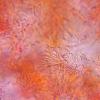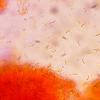
24-11-2023 12:21
 Lothar Krieglsteiner
Lothar Krieglsteiner
.. 19.11.23, Schwäbische Alb.The fotos are made i

24-11-2023 06:55
 Danny Newman
Danny Newman
more and higher resolution images available at ina

24-11-2023 21:10
 Danny Newman
Danny Newman
higher resolution images available at inaturalist.

24-11-2023 20:34
 Danny Newman
Danny Newman
more and larger resolution images available at ina

23-11-2023 09:59
 Lothar Krieglsteiner
Lothar Krieglsteiner
... found 19.11.23, Schwäbische Alb, on still att

23-11-2023 10:07
 Lothar Krieglsteiner
Lothar Krieglsteiner
.. on standing bush, Schwäbische Alb (Germany), 1

23-11-2023 11:55
 Robin Isaksson
Robin Isaksson
HiFound on calcareus ground between thallus of Ps

23-11-2023 10:27
 Lothar Krieglsteiner
Lothar Krieglsteiner
... 19.11.23, Schwäbische Alb.the fourth foto is

22-11-2023 10:48
 Björn Wergen
Björn Wergen
Dear friends,I have another one, of which I do not

20-11-2023 22:42
 Robin Isaksson
Robin Isaksson
Hi Maybe this one is a lichen, but cant find a
violaceous slimy anamorph on Fagus wood
Lothar Krieglsteiner,
24-11-2023 12:21
 .. 19.11.23, Schwäbische Alb.
.. 19.11.23, Schwäbische Alb.The fotos are made in Kongo NH3.
The conidia I measured about 3,5-5/0,5-1 µm.
Who can provide me with a hint?
Yours, Lothar
Stip Helleman,
24-11-2023 12:39

Re : violaceous slimy anamorph on Fagus wood
Hallo Lothar, it looks like Ascocoryne inflata.
Cheers, Stip
Lothar Krieglsteiner,
24-11-2023 12:42

Re : violaceous slimy anamorph on Fagus wood
thank you, Stip! I did not know this species has such an anamorph.
Yours, Lothar
Yours, Lothar
Hans-Otto Baral,
24-11-2023 15:24

Re : violaceous slimy anamorph on Fagus wood
I agree. I found this autumn only the teleomorph. I recommend water also in such hyaline structures, e.g. the anamorph of A. inflata has a crystal in the inflated metulae which you miss in such a medium with ammonia.
The question is whether this anamorph is really undescribed. Wilson did not observe it, and Seifert published a drawing which I believe is the same:
Lothar Krieglsteiner,
24-11-2023 17:04

Re : violaceous slimy anamorph on Fagus wood
vielen Dank, Zotto, für die Bestätigung und die Zusatz-Infos.
Ob auch die Hauptfruchtform dabei war, weiß ich nicht. Es stand einiges an Ascocoryne-Hauptfruchtformen auf diesen Stämmen, aber ich habe es nciht mitgenommen - zu viele andere Proben ... - und einen Zusammenhang mit dieser Anamorphe habe ich nicht gezogen. Das wird sich beim nächsten Mal geändert haben.
Viele Grüße,
Lothar
Ob auch die Hauptfruchtform dabei war, weiß ich nicht. Es stand einiges an Ascocoryne-Hauptfruchtformen auf diesen Stämmen, aber ich habe es nciht mitgenommen - zu viele andere Proben ... - und einen Zusammenhang mit dieser Anamorphe habe ich nicht gezogen. Das wird sich beim nächsten Mal geändert haben.
Viele Grüße,
Lothar
Hans-Otto Baral,
24-11-2023 17:23

Re : violaceous slimy anamorph on Fagus wood
Die Apos stehen gewöhnlich etwas separat von den Konidiomata, aber mit nur vielleicht 1-3 mm Abstand.
Stip Helleman,
24-11-2023 22:25

Re : violaceous slimy anamorph on Fagus wood
Ja stimmt, ich habe aber auch beobacht das die Teleomorph sich innnerhalb 2 Wochen aus der anamorph sich entwicklet.
@Zotto, gibt es ein PDF von das Seifert Artikel?
L.G. Stip
Hans-Otto Baral,
25-11-2023 10:20

Re : violaceous slimy anamorph on Fagus wood
Hast du den Übergang von Ana zu Teleo irgendwie dokumentiert? Von sarcoides wird das auch berichtet.
Ich schicke dir den Seifert.










 Ascocoryne-inflata-Seifert-1989-p.-162-fig.-2-e-ndash-g-0001.jpg
Ascocoryne-inflata-Seifert-1989-p.-162-fig.-2-e-ndash-g-0001.jpg